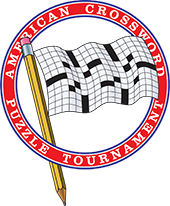Famed puzzle editor explains appeal
Source: The Grand Rapids PressDate: February 18, 2008
Byline: Kathy Carrier
Famed puzzle editor explains appeal
Although the first crosswords appeared in England during the 19th century, the first published crossword puzzle appeared in the Sunday edition of the New York World on Dec. 21, 1931. Designed in a diamond shape, it had no internal black squares.
During the 1920s, other newspapers began publishing crossword puzzles and, by the 1930s, the word challenge was featured in nearly all American newspapers. The New York Times published its first crossword in 1942.
In a telephone interview, New York Times puzzle page editor Will Shortz shared his insight about crosswords.
Q: Why are crossword puzzles so popular?
A: A big reason is that they appeal to a broad spectrum of interests. Crosswords embrace everything in life's experiences, and everyone can find something they can identify with.
Q: How do crossword puzzles improve brain power?
A: When it comes to improving brain health, it makes sense that, just like your body needs exercise, you need to use your mind so your brain will stay in shape. Crosswords exercise all parts of the brain, and you're working out on all different levels — numbers, language skills, memory, history, etc. ... Plus, doing them is fun, and it can easily become a daily part of your life, as you're improving your mind."
Q: What is it about crossword puzzles that continues to draw people in?
A: Crosswords are now more clever and playful than ever, with more twists and turns to figure out.
Q: Tell us about your American Crossword Puzzle Tournament.
A: Last year, we had a record number of participants, with 689 competing in the tournament and another 1,000 people playing online or by mail. People can go to our Web site and play the same puzzles at home we use in the tournament. We can send them by mail or they can get them online. They're not eligible to win prizes, but they can see their results, and we'll tell them where they would've placed in the ranking.
Q: What's the answer that confuses the most people?
A: The New York Times crossword answer that stumps people the most is RANDR, which looks like a crazy word, but is actually a three-word phrase — R AND R, as in rest and relaxation.

